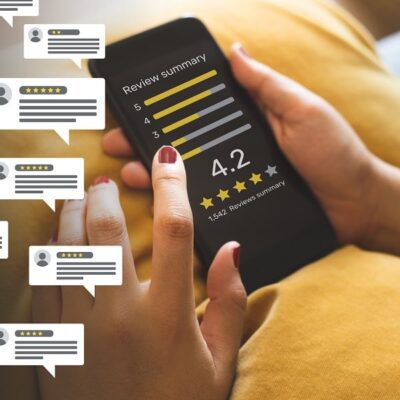Whatever industry you are in, Facebook is one of the best options for improving your online visibility. You can use the site to attract new customers, retain current ones, and create the brand image you want for your business. However, the site will only bring your business success if you use its tools and features the right way.
1. Fill Your Page with Useful Information
Before you do anything else, make sure your page is complete. Fill in all the fields to explain what your business does, what products or services you offer, and why users should find your brand interesting — especially by highlighting the value you have over your competitors. Include your contact information, including an address, phone number, email, operating hours, and a link to your website.
Remember to pay attention to visuals as well as text. In addition to a profile picture and cover photo, create some albums. Here you can show pictures of your physical business, your staff in action, some of your top offerings, and anything else users might find helpful.
2. Discover Your Audience
You may already have a good idea of who makes up your target audience. In any case, Facebook can provide valuable information about your prospects and customers. Turn to the Audience Insights tools to gain a clearer picture of the users following your page. This will help you define your buyer personas and enable you to create better targeted content.
3. Use Facebook Ads
Facebook ads are particularly useful for building your following. You can deliver ads just to users who are likely to be interested in your business. One great thing about Facebook ads is that they use an auction system. This means you can set a budget for each of your campaigns, and can change the budget at any time.
To make the most of Facebook’s advertising capabilities, target a different buyer persona in each of your campaigns.
In addition, you should ensure that every campaign has a clear objective. This will help you in creating the ad and choosing the right payment option; plus, it will make sure users know what action to take after seeing your ad.
4. Post Interesting Content
To maintain and grow the number of followers to your page, you need to continuously publish the type of content users want to see. You can post content from your blog or create pieces just for Facebook, like videos, images, and short updates.
If you are a local brand, attract more users from your area by posting about local events and news. There is no need to create this content yourself, as you can share posts from other local businesses — they will be appreciative of your support. You can also encourage engagement within your community by posting about your events. Not only will notifying and reminding people increase the number of attendees, but users will also be able to easily invite their friends.
5. Create a Publishing Schedule
Decide when and what to publish in advance, and schedule everything on an editorial calendar for Facebook. To determine how often and at what time you should publish, you will need to test what works. Both too many and too few posts can result in users un-following your page. Aim to post at least once per week, but no more than a couple times per day. When you should post will depend on your target audience. Monitor your content and note if you receive more engagement when you publish at certain times of the day.
6. Use Instant Articles
In addition to regular content, consider including some Instant Articles in your strategy. Instant Articles feature interactive content that loads much faster than normal. Currently, they are only available for mobile devices.
Earlier this month, Facebook improved the Instant Articles feature by giving marketers additional control and increasing the opportunities for advertising. For example, the previous limitation for ads was once every 350 words — now you can include an ad every 250 words. Plus, you can place ads where you want them, or choose to distribute them equally throughout the article, every 250, 350, or 500 words.
7. Respond to Users
Social media makes it possible to have conversations with your prospects to build closer relationships. Try to respond to comments as often as possible, even the negative ones. When you receive and respond to negative comments you have the opportunity to show the professionalism of your brand while resolving a problem or issue for your customer – and hopefully keeping them as a customer! When an issue is complicated, invite the user to contact you through a private message or call. Neutral and positive comments are equally important, as they give you the opportunity to start a discussion with users.
Another way to communicate with users is through messages. Facebook now lists brands’ response times on their pages. If you maintain a fast average response time, more prospects will be willing to engage with your business, which may enable you to generate leads directly on the site.
Success on Facebook requires commitment to the platform. Define your strategy before you start in order to ensure that you stay on track and take all of the above into consideration.









